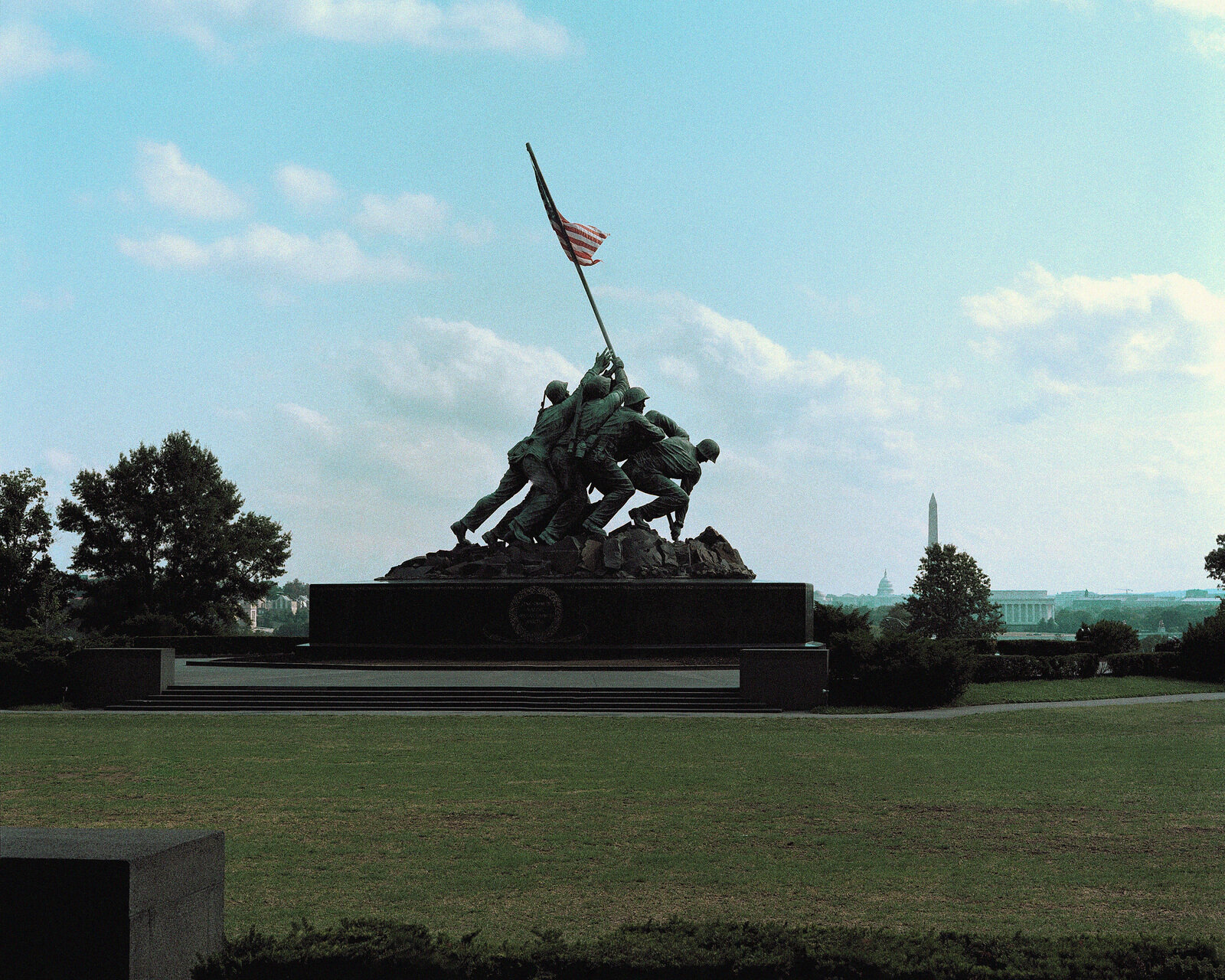Breaking Down the Marine Corps War Memorial
The image of United States Marines raising the American flag over the battlefield of Iwo Jima during the height of the Second World War is easily among the most iconic in American memory. In fact, this harrowing silhouette is the at the core of the Marine Corps War Memorial — a monument dedicated to all U.S. Marines that sits just outside the District of Columbia.
The Marine Corps War Memorial with the Lincoln Memorial, Washington Monument, and Capitol Building visible in the background.
The Marine Corps War Memorial sits just across the Potomac River in Arlington County, Virginia. In fact, it is so close to Washington, D.C. that visitors are able to clearly view the silhouettes that make up the National Mall from the memorial. It also sits remarkably close to the boundaries of Arlington National Cemetery as walking past the monument for no more than 10 or so minutes will bring visitors to the outskirts of the cemetery’s nearly 640 acres. However, there is much more meaning and history behind the Marine Corps War Memorial beyond its proximity to such hallowed ground.
The memorial was dedicated by President Dwight D. Eisenhower on November 10, 1954, on the 179th anniversary of the founding of the United States Marine Corps. While it was built in the wake of World War II, the monument honors all U.S. Marines who have served, both before and since the its construction. The Marine Corps was first established by a Revolutionary War-era resolution made to raise two battalions of men as marines, when Captain Samuel Nicholas put out a call for “a few good men.” The statue at the center of the memorial is fitting to that original call to arms: most will likely recognize the piece as a recreation of the famous Raising the Flag on Iwo Jima photograph with six Marines planting a U.S. flag on top of Mount Suribachi during the U.S.’s advance on Japan in World War II.
The photograph Raising the Flag on Iwo Jima was taken by Associated Press photographer Joe Rosenthal on February 23, 1945 as the war in the Pacific Theatre wound to a close. It quickly became one of the most iconic photographs of the 20th century and was awarded the Pulitzer Prize as well as serving as the inspiration for the Marine Corps War Memorial.
This memorial was designed by sculptor Felix W. de Weldon soon after the war, as he was inspired by the aforementioned photograph while he was serving in the Navy during the conflict. After the initial mold was complete, Rene Gagnon, Ira Hayes, and John Bradley posed for de Weldon to mold their faces into the initial clay sculpture as the only three survivors of the flag raising, as the others photographed — Franklin Sousley, Harlon Block, and Michael Strank — perished in the war.
However, after a 2016 Marine Corps investigation initiated by a National Geographic source, the Marines discovered that Bradley was not actually a part of the iconic photograph, and was instead present at another flag raising on the island. The investigation revealed that Private First Class Harold Schulz was actually the sixth man on the team raising the flag, that he had been misidentified as Franklin Sousley, and Sousley had been misidentified as John Bradley. Despite this new information, there are currently no plans to change the faces on the memorial, as it is cast in bronze and therefore making it extremely difficult to make alterations to the memorial.
The statue itself is imposing, with each of the six depicted Marines being 32 feet tall and the flagpole being 60 feet tall. The only non-bronze or granite part of the memorial is the huge American flag on the pole, which flies 24 hours a day, 365 days a year by presidential order. The names and dates of every Marine Corps engagement encircle the statue, signifying the universal application of the memorial to all Marines despite the time-specific nature of the statue’s inspiration.
A portion of the approximately 400,000 graves at Arlington National Cemetery which can be viewed after walking a short distance past the Marine Corp War Memorial.
All in all, the memorial is a touching tribute to the role that the U.S. Marine Corps have played in our nation’s story — from the earliest moments of the United States to the pivotal Battle of Iwo Jima. It is most certainly a site worth seeing should you ever find yourself exploring all that our nation’s capital has to offer.
Related Content From Historic America
Tour: Arlington National Cemetery
Tour: National Mall
Journal: Traveling to the Bedford D-Day Memorial
Journal: Visiting the USS North Carolina



